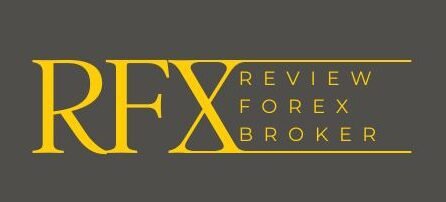The appeal of online trading, particularly in dynamic markets like Forex, is stronger than ever in 2025. With just a few taps, you can access global financial instruments, potentially generating significant returns. However, this accessibility also opens the door to a darker side: the proliferation of fraudulent brokers. These scams prey on hopeful investors, promising quick riches while ultimately aiming to relieve you of your capital.
Knowing how to spot the warning signs is your first and best line of defense. Here are the red flags that should send shivers down your spine and prompt you to run, not walk, away.
The Most Critical Red Flags
- Lack of Proper Regulation (Or Misleading Regulation): This is the number one red flag. Reputable brokers are licensed and strictly regulated by recognized financial authorities in major jurisdictions (e.g., FCA in the UK, CySEC in Cyprus, ASIC in Australia, NFA/CFTC in the US, FINMA in Switzerland).
- Warning Signs: No mention of regulation, registration with an obscure or weak offshore regulator (like some island nations with lax oversight), or claiming to be regulated but providing a fake license number or a name that doesn’t match the regulator’s database. Always cross-reference the license number directly on the regulator’s official website.
- Clone Firms: Be extremely wary of firms that mimic the name, logo, or website of a legitimate, regulated broker. Always verify the exact URL and contact details against the official broker’s website.
- Unsolicited Contact and High-Pressure Sales Tactics:
- Warning Signs: Cold calls, emails, or messages via social media (especially WhatsApp, Telegram) from someone you don’t know, pushing you to open an account immediately. Aggressive sales pitches, threats of “missing out” on a limited-time opportunity, or persistent follow-ups designed to rush your decision. Legitimate brokers typically don’t cold-call with promises of guaranteed wealth.
- Guaranteed High Returns with Little to No Risk:
- Warning Signs: Any broker or “investment guru” promising guaranteed daily, weekly, or monthly profits. Claims of “risk-free” trading, “foolproof” strategies, or “AI bots” that generate massive returns with no downside. Trading, especially in Forex, involves inherent risk. Anyone claiming otherwise is lying.
- Vague or Opaque Fee Structures:
- Warning Signs: A lack of clear information about spreads, commissions, overnight (swap) fees, deposit/withdrawal fees, or inactivity charges. If you have to dig through endless terms and conditions or ask multiple times to get a straightforward answer about costs, proceed with extreme caution. Transparent brokers clearly lay out all potential charges.
- Unusual or Untraceable Payment Methods:
- Warning Signs: Requests to deposit funds via cryptocurrency to a personal wallet, gift cards, wire transfers to obscure international accounts, or money transfer apps. Legitimate brokers operate through established banking channels that offer investor protection.
- Difficulty with Withdrawals:
- Warning Signs: This is often the most painful red flag, appearing after you’ve deposited money and perhaps even seen “profits” in your account. The broker delays withdrawals indefinitely, makes endless excuses (system errors, compliance checks, tax issues), or demands additional “fees” (like a “tax fee” or “release fee”) before processing your withdrawal. This is a common tactic to extract more money from victims.
- Unrealistic Bonuses and Promotions:
- Warning Signs: Offers that seem too good to be true, such as a 100% deposit bonus with impossible trading volume requirements before you can withdraw any funds. These are designed to lock your money into the platform.
- Poorly Designed Website or Communication:
- Warning Signs: A website riddled with spelling or grammatical errors, broken links, generic stock photos, or a lack of professional polish. Communication that is unprofessional, informal, or pressuring.
- Anonymous or Limited Contact Information:
- Warning Signs: No verifiable physical address, only a generic email address, no phone number, or a phone number that constantly goes unanswered. A legitimate broker will have transparent and easily accessible contact details.
- Aggressive Coaching or Trading on Your Behalf:
- Warning Signs: A “broker” or “account manager” insisting on trading your account for you, pushing you into increasingly risky trades, or pressuring you to deposit more funds to “recover” losses incurred by their aggressive strategies. Always maintain control of your own trading decisions.
What to Do If You Suspect Fraud:
- Cease All Communication: Stop responding to emails, calls, or messages from the suspected fraudulent broker.
- Do Not Send More Money: Never, under any circumstances, send additional funds, especially if they are requesting “fees” for withdrawals.
- Gather All Evidence: Collect screenshots of communications, transaction records, website URLs, and any other relevant documentation.
- Report Immediately:
- Contact the financial regulatory body in your country or the country where the broker claims to be regulated (even if you suspect it’s fake).
- Report to your local law enforcement agency.
- If you paid by credit card, contact your bank immediately to explore chargeback options.
- Share your experience on legitimate trading forums and consumer warning sites to help prevent others from falling victim.
The online trading world is vast and full of opportunity, but it also demands vigilance. By recognizing these red flags and prioritizing regulated, transparent brokers, you can significantly protect your capital and ensure your trading journey is legitimate and secure. Always remember: if it sounds too good to be true, it almost certainly is.

